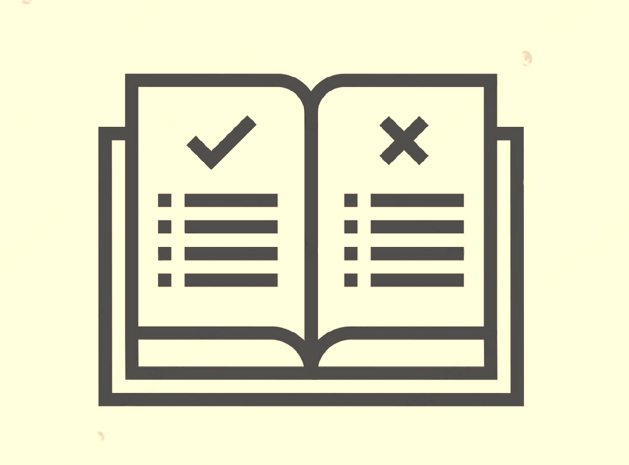What is Enterprise Data Governance and Why Does It Matter?
- Ndz Anthony
- March 27, 2023

Imagine you have a treasure chest full of gold and jewels. You would want to protect it from thieves, right? You would also like to know how much it is worth, where it came from, and how to use it to achieve your goals. Well, data is like a treasure chest for any business in the digital age.
But data alone is not enough to make your business successful. You must govern your data effectively to ensure its quality, security, usability, and alignment with your business goals and objectives. This is where enterprise data governance comes in.
Enterprise data governance is critical to capturing value through analytics, digital, and other transformative opportunities. However, many businesses need help to get it right.
According to a Deloitte survey, only 11% of respondents indicated a strong governance structure currently in place, and only 10% believed that finance data governance is a crucial benefit to their organization. This shows a huge gap between the potential and reality of data governance.
So how can you bridge this gap and make enterprise data governance work for your business? This article will explore what enterprise data governance is and why it matters for your business’s success. We will also discuss the main components and principles of enterprise data governance, as well as some best practices and tips for implementing and maintaining effective data governance in your organization.
What is Enterprise Data Governance, and Why Do You Need it?
Data is the lifeblood of any organization. It powers decision-making, analysis, innovation, and growth. But data can also be a source of frustration, confusion, and risk. Data can be inaccurate, inconsistent, inaccessible, or insecure. Data can be misused, mishandled, or misplaced.

That’s why you need enterprise data governance. Enterprise data governance defines a unified way to govern data assets to reduce overall data quality issues so that all data users have greater trust in the data at their disposal. It also ensures that data is accurate, usable, and accessible. And it prevents data from getting misused, mishandled, or misplaced.
Enterprise data governance is not pleasant to have. It’s a must-have for any organization that wants to be data-driven and competitive in today’s digital world. Without adequate data governance, data management will quickly descend into chaos!
Main Components and Principles of Enterprise Data Governance
Enterprise data governance is not a one-size-fits-all solution. It requires a tailored approach that suits each organization’s specific needs and goals. However, some common com standards and principles can guide the design and implementation of enterprise data governance. Here are some of them:
Components

According to Satori Cyber, a data governance platform provider, there are ten essential components of enterprise data governance:
- Data governance framework: The organizational framework specifies how data is to be handled and by whom in the business context.
- Data governance roadmap: Strategy document for data governance with defined roles and responsibilities, as well as long-term and short-term goals and associated milestones.
- Data governance team: Collective individuals tasked with managing and carrying out data governance initiatives. A team may consist of a leader responsible for data governance, as well as data stewards, data owners, data custodians, and other interested parties.
- Data governance tools: A suite of programs that facilitate data governance tasks like data cataloging, data quality management, data lineage tracking, data security management, and data analytics.
- Data catalog: When an organization’s data is stored in one place, called a repository, all of its data assets may be seen in a unified and comprehensive fashion. Definitions, descriptions, sources, owners, usage history, quality indicators, and linkages are all examples of metadata.
- Data quality management: Methods taken to guarantee that information is correct, comprehensive, consistent, current, and reliable. Managing data quality entails establishing guidelines and metrics for assessing it, keeping tabs on its status, and fixing any problems it may have.
- Data lineage: An account of how information has circulated inside the company and how it has been used. Knowing the backstory, timeline, and effects of any data manipulations or choices is beneficial.
- Data security management: A process that protects data confidentiality, integrity, and availability. It involves identifying and classifying data according to its sensitivity and risk level, implementing data access controls and encryption methods, and monitoring and auditing data activities and incidents.
- Data analytics: A process that transforms data into insights that can inform business decisions or actions. It involves collecting, processing, analyzing, and visualizing data using various methods and tools.
Principles

According to Microsoft Azure, a cloud computing service provider, there are five fundamental principles of effective data governance:
- Accountability: Assign clear roles and responsibilities for managing and using data across the organization. Establish a chain of command and escalation paths for resolving data issues or conflicts.
- Transparency: Provide visibility and access to relevant information about the organization’s data assets. Document and communicate the policies, standards, processes, and metrics for data governance.
- Quality: Ensure that the organization’s data meets the expectations and requirements of its users. Implement processes and tools to monitor and improve data quality throughout its life cycle.
- Security: Protect the organization’s data from unauthorized or inappropriate access or use. Implement processes and tools to enforce security policies and controls for different data types.
- Value: Maximize the potential and benefits of the organization’s data for achieving its goals. Implement processes and tools to enable effective and efficient use of data for decision-making innovation.
Best Practices for Enterprise Data Governance

Enterprise data governance is not a one-size-fits-all solution. It depends on the specific needs and goals of your organization. However, some general best practices that can help you design and implement effective enterprise data governance are:
Think Big But Start Small

Start with a clear understanding of why you need enterprise data governance and what you want to achieve with it. Align your vision and strategy with your business objectives and priorities.
Appoint an Executive Sponsor
Appoint an executive sponsor with the authority and influence to drive enterprise data governance. The executive sponsor should champion the value and benefits of enterprise data governance and ensure its alignment with business goals.

Establish a Cross-functional Team
Create a team representing all the key stakeholders using or governing data across the organization. Assign roles and responsibilities to each team member based on their expertise and authority.

Develop a Framework and Roadmap
Develop a framework that defines the scope, principles, standards, policies, processes, roles, and metrics for enterprise data governance. Create a roadmap that outlines the steps, resources, and timelines for implementing the framework.
Implement Tools
and technologies that support the framework and roadmap for enterprise data governance. These may include data catalog tools, data quality tools, data lineage tools, data security tools, and data analytics tools.
Communicate and Educate
Communicate and educate your organization about the value and benefits of enterprise data governance. Create a culture of data literacy and responsibility that encourages data users to follow the standards and policies for data usage.

- Use stories and examples to convey how enterprise data governance can help solve real business problems or create new opportunities.
- Use emotion to engage your audience and make them feel invested in the success of enterprise data governance. For example, you can use fear to highlight the risks of poor data quality and security or excitement to showcase the potential of data-driven innovation or growth.
- Use different channels and formats to reach different segments of your organization, such as newsletters, webinars, workshops, or podcasts.
Monitor and Measure
Monitor and measure the performance and impact of enterprise data governance. Use metrics and indicators that reflect your objectives and priorities — track and report on the progress and outcomes of your data governance initiatives.
- Use quantitative metrics to measure the efficiency and effectiveness of your data governance processes, such as data quality scores, data access rates, or data compliance rates.
- Use qualitative metrics to measure the satisfaction and perception of your data users, such as feedback surveys, testimonials, or case studies.
- Use visualizations and dashboards to present your metrics clearly and compellingly, highlighting your achievements and challenges.
Adapt and Improve
You can adapt and improve your enterprise data governance framework and roadmap based on your organization or environment’s feedback, learnings, and changes.
- Use regular reviews and audits to evaluate the performance and impact of your enterprise data governance framework and roadmap. Identify any gaps, issues, or opportunities for improvement.
- Use agile methods to implement changes or updates to your enterprise data governance framework and roadmap. Test new ideas or solutions in small batches before scaling them up.
- Use continuous learning and innovation to keep up with your data users’ evolving needs and expectations. Seek new ways to enhance the value and quality of your data assets.
How Does Enterprise Data Governance Enable Better Decision-Making?
Enterprise data governance is not just about managing data; it’s also about using data to make better decisions. Decisions are based on facts, not feelings. Decisions that are ethical, not exploitative. Decisions that can help you achieve your goals and make a positive impact.

Data-Driven Decisions
Suppose you are a business owner and want to launch a new product. How do you know if your product will be successful? How do you know who your target customers are? How do you know what price to charge? How do you know what marketing channels to use?
You could rely on your gut feeling or personal experience, but you might need more. You might miss some important insights or opportunities. You might make some costly mistakes or wrong assumptions.
That’s why you need data-driven decisions. Data-driven decisions are based on facts, evidence, and analysis. They help you answer questions like:
- What are the market size and demand for your product?
- What are the characteristics and preferences of your potential customers?
- What are the best features and benefits of your product?
- What are the optimal price and promotion strategies for your product?
- What are your product’s most effective and efficient distribution and communication channels?
To make data-driven decisions, enterprise data governance ensures that data is available, accessible, and actionable for decision-makers. It also ensures that data is analyzed, interpreted, and presented meaningfully.
Ethical Decisions
Ethical decisions are based on values, principles, and standards that respect the rights and interests of all stakeholders involved. Moral judgments can help organizations achieve better reputation, trust, loyalty, and social responsibility outcomes.
Did you know that 86% of consumers say they are more likely to trust a company that demonstrates ethical behavior? According to a report by Edelman Trust Barometer, some of the benefits of ethical decisions are:
- They enhance brand image and reputation
- They increase customer satisfaction and retention
- They attract and retain talent and partners
- They mitigate risks and liabilities
But how do you make ethical decisions? You need enterprise data governance. Enterprise data governance ensures data is collected, processed, stored, and shared lawfully and ethically. It also ensures that data is used for legitimate and beneficial purposes.
Enterprise Data Governance With Datameer
If you are looking for a solution that can help you implement enterprise data governance quickly and easily, you should consider Datameer.
Datameer is a cloud-based platform that allows you to transform, analyze, and automate data insights using SQL or no-code in one solution. It is built for Snowflake, the leading cloud data platform that provides secure and scalable data storage and processing.
With Datameer, you can:
- Search across your entire data landscape with a built-in data catalog. Any data asset’s documentation and metadata are available with a single click.
- Transform your data into a usable format without writing any code. You may utilize drag-and-drop formulas, filters, and functions to clean, enrich, and restructure your data.
- Analyze your data using SQL or visual tools. You can create charts, dashboards, and reports to explore and share your data insights.
- Automate your data workflows using triggers and schedules. Pipelines can be configured to execute your transformations and analyses automatically and deliver your results to any location.
Datameer helps you achieve enterprise data governance by ensuring your data is reliable, secure, and compliant. It also enables you to use your data to make better decisions based on facts and values.
Many leading organizations across various industries such as finance, health, care, retail, media, and more, trust Datameer. Some of their customers include Citibank, Aetna, Comcast, Disney, and Netflix.
Request a demo with us today.
Datameer is not just a tool; it’s a partner.
A partner that helps you transform your data into value.


